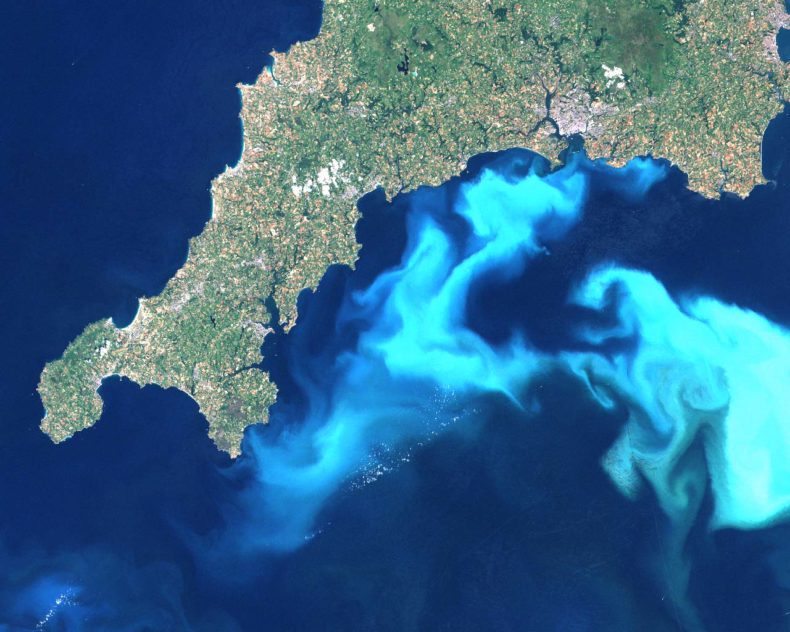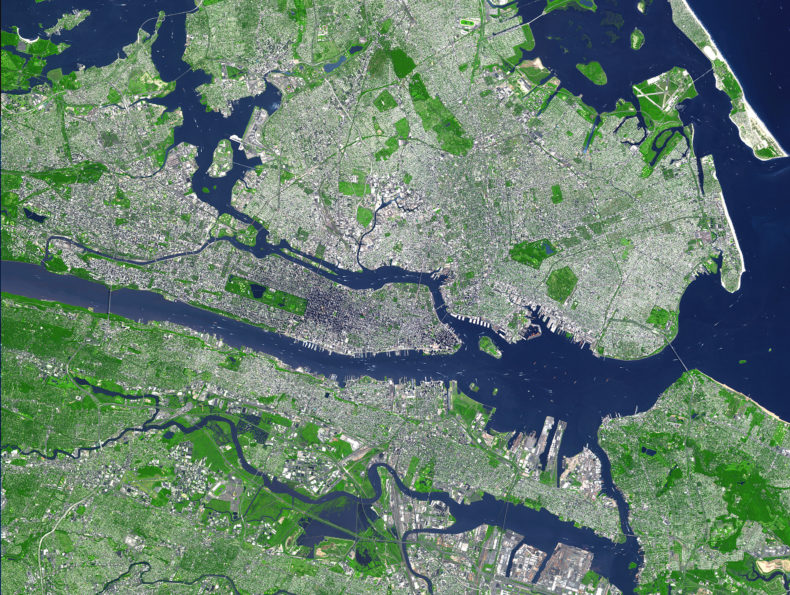
In the summer of 2012 I lived on a ship called the R/V Knorr for a month. I was there to document the scientists on board, and they were there to gather plankton samples from the North Sea to study a virus that attacks those plankton. I was recently organizing my office, and I found the notebook that I used during the trip.
It’s always interesting to revisit notes from a trip, because (at least for me) often what I remember most about the trip isn’t usually the things that I think are important at the time. In my notebook I wrote a lot about sea sickness. For the record: I never actual got sea sick. But according to my notebook I worried about getting sea sick a lot.
But one thing I that I do still think about from the trip, and that I wrote a lot about in my notes, is scale. Here’s a segment from my notes from 2012:
When you’re on a ship, in the middle of the ocean, studying a microscopic plankton using both DNA sequencing and satellite imagery, scale suddenly becomes an odd thing. I am five feet, three inches tall. The MODIS satellite over my head is 700 km above the earth. It’s beaming back images at 4,000 meter resolution and the pictures it’s showing are telling us about organisms that are about 40 micrometers wide. The R/V Knorr is 279 feet long. Below the Knorr is 2,500 feet of water. From the bridge, most days you can see about seven miles. But from the deck, none of that feels meaningful.
In Paradise Lost, John Milton reflected on the vastness of the sea:
A dark
Illimitable ocean without bound,
Without dimension, where length, breadth, and highth
And time and place are lost
Intellectually you know the numbers, you understand the scale of your work, and of the ship, and of the sea. And bridging those scales is a testament to a huge amount of scientific breakthroughs. Satellite imagery has improved dramatically. Microscopy is far better, and we can see things we can’t actually see with DNA sequencing. Radar shows our instruments in the water, and GPS where we are in the ocean.
But even now, even with satellites, sonar, radar and GPS, there is still that loss of place. On the GPS map you are a dot in the middle, but from deck you are surrounded by water seemingly forever. It’s impossible to tell how far you’re looking, how deep the ocean is below you, and how much further you have to go. It’s also impossible to sea the creatures you’re studying, and even more impossible to see the viruses that are attacking them.
The researchers on this ship were looking at very, very small organisms called coccolithophores, which can bloom and be seen from space. And not only can these tiny creatures create milky streaks in the ocean, some of the researchers on board hypothesized that they could actually impact the global climate. And to study these tiny tiny things that can have huge impacts, the researchers were using huge machines and satellites. The only thing at human scale involved in this research were the actual humans.
Now that I’m back in New York City, I think about coccolithophores less, but I still think about scale all the time. I’m one person in a city of 8.4 million. I live in one apartment of over two million. My dog is one of 600,000. We’re both effectively anonymous everywhere we go. At the Queens Museum there’s an amazing scale model of New York City from the 1964 Worlds Fair. Or, if you prefer something more high-def way of feeling small in this city, there’s this photograph of all of Manhattan. Or if you want something even more high-tech here’s an image of the city from NASA’s Earth Observatory.

This photo was taken NASA’s Terra satellite, which orbits our planet at 428 miles above the surface. Can you find me? I think I’m up in the middle bit somewhere.
Of course, New York City is full of its own microscopic worlds too. There are the sometimes controversial tiny shrimp in the water supply. The subways and humans are covered in microbes and in… other things you can actually see. (Fran Leibowitz once said ““When you leave New York, you are astonished at how clean the rest of the world is. Clean is not enough.”)
Today we have the technology to bridge the satellite data and the microscopic data into a single picture. Which is really cool! Now I just need a processing engine to help me do the same.
2 thoughts on “I Am Tiny Or Very Large”
Comments are closed.